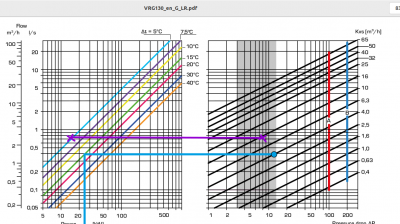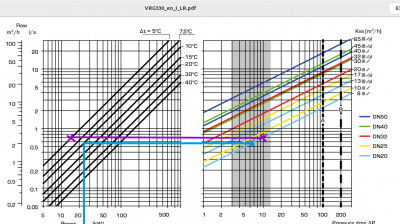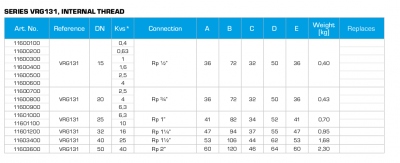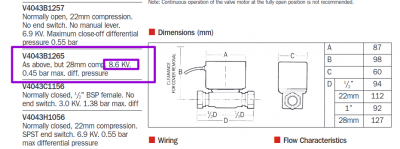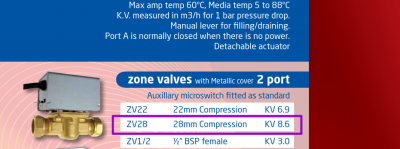Posted by: @bensebAgreed I definitely don’t think ASHP are “set and forget”, there’s a whole spectrum of issues that don’t get flagged by errors.
I’m no engineer but between work and home we’ve had 7 ASHPs so I do know my way around them and can spot when things don’t look right.
are you in the U.K.! At a design life of 20 yrs each (correctly installed) that would make you 140yrs old!
probably the better controls are those from boiler manufacturers such as vaillant. I know they are almost “fit and forget” because I ve been installing them for 15yrs!
Professional installer
Posted by: @alec-morrowPosted by: @bensebAgreed I definitely don’t think ASHP are “set and forget”, there’s a whole spectrum of issues that don’t get flagged by errors.
I’m no engineer but between work and home we’ve had 7 ASHPs so I do know my way around them and can spot when things don’t look right.
are you in the U.K.! At a design life of 20 yrs each (correctly installed) that would make you 140yrs old!
probably the better controls are those from boiler manufacturers such as vaillant. I know they are almost “fit and forget” because I ve been installing them for 15yrs!
Unfortunately at work we had Husky heat pumps installed (x3) which were awful. We’d often come in on a Monday morning and it would have thrown a fault and the big stone office would be 10c. so we ditched them and now have Panasonic units.
Then I have an Ecodan at home.
250sqm house. 30kWh Sunsynk/Pylontech battery system. 14kWp solar. Ecodan 14kW. BMW iX.
Partially closed radiator valves both lockshield and TRV's will restrict the flow around the system, and hence the water pump will need to work a little harder to achieve the required flow rate.
Because it is not possible to match the standard heat output from the radiator to the heat loss of a particular room, with all the valves fully open, there will be different air temperatures achieved from room to room.
If you know the individual heat loss of each room, and the standard heating capacity of any radiators within each room, it should be possible to calculate the approximate water temperature required to meet the heat loss.
By using the spreadsheet that I posted recently, the required water temperature for each room can be obtained. Just as the speed of a convoy is set by the slowest ship, the LWT of the heat pump is determined by the room requiring the highest water temperature.
Therefore starting at the room requiring the lowest water temperature, gradually reduce the flow rate through any radiators using the lockshield valves. This will therefore divert some of the flow from this room to the other one's.
It can be a slow process but should be worth it in the end, since your system should be operating in a more balanced and efficient manner.
Posted by: @heacol@benseb the Delta T should be between 5 and 10 Deg C. Try reduce the speed on one of the circulating pumps. This will increase the Delta T and further reduce your running cost. Do you have a buffer tank? If so see if you can pipe it out, this will further increase your performance.
@heacol I have a 12kW Samsung ASHP with a 50 litre buffer tank and two fixed speed water pumps - primary pump = 19-20L/min and secondary pump = unknown flow rate. I use weather compensation and turn thermostat up well above room temperature to optimise efficiency. However, the COP is nothing like what Samsung claim it could be. How much benefit would I get from removing the buffer tank and secondary pump and replacing the primary pump with a PWM primary pump? I have been told the buffer tank is essential as during a defrost cycle, the heat pump has no access to the radiators if the thermostat is not calling for heat at the time (ie CH valve is closed). If true, this sounds like a design fault, but it is difficult to get accurate info from Samsung.
@mike-h I am doing a presentation on exactly this at PowerXlive in London on wedensday. You will see a significant increase in performance if you remove the buffer tank, remove all control in the common areas, keep the control in the bedrooms and either, if your house hase a large thermal mass and or under floor, run it on weather compensation, if not then use the temperature sensor inside the Samsung controller to control the temperature in the house. The less interferance there is, the better the performance will be.
@mike-h The heating circuit should never be closes, you need to install a 3 port diverter full ball valve, either a Belimo, Esbe or Sintesi (from V Flow solutions) You must NEVER install a Honeywell type 2 or 3 port valve with a ball inside. THEY DO NOT WORK WITH HEAT PUMPS as they significantly reduce the flow rate, increase the pumping costs and reduce the performance. It really is common sense, let the water flow, anything that will stop the flow will affect the performance.
Defrost, in reality, requires less than 1 Kw from the heating system, so as long as water is flowing, there will be no problem.
Posted by: @heacol@mike-h The heating circuit should never be closes, you need to install a 3 port diverter full ball valve, either a Belimo, Esbe or Sintesi (from V Flow solutions) You must NEVER install a Honeywell type 2 or 3 port valve with a ball inside. THEY DO NOT WORK WITH HEAT PUMPS as they significantly reduce the flow rate, increase the pumping costs and reduce the performance. It really is common sense, let the water flow, anything that will stop the flow will affect the performance.
Defrost, in reality, requires less than 1 Kw from the heating system, so as long as water is flowing, there will be no problem.
Thats interesting about the Honeywell valves. Our flow rate is below what it should be due to them using 28mm plastic instead of 35mm copper so we’re trying to eek out any extra flow we can.
I guess the V Flow valves will need a plumber to replace (or are they the exact same size so can be easily swapped?)
250sqm house. 30kWh Sunsynk/Pylontech battery system. 14kWp solar. Ecodan 14kW. BMW iX.
@benseb You may need a plumber to install it, once you have done it, you may find the pipe is OK, if not, you can install another pump in series and run it on speed 1 or 2.
Posted by: @heacol@mike-h The heating circuit should never be closes, you need to install a 3 port diverter full ball valve, either a Belimo, Esbe or Sintesi (from V Flow solutions) You must NEVER install a Honeywell type 2 or 3 port valve with a ball inside. THEY DO NOT WORK WITH HEAT PUMPS as they significantly reduce the flow rate, increase the pumping costs and reduce the performance. It really is common sense, let the water flow, anything that will stop the flow will affect the performance.
Defrost, in reality, requires less than 1 Kw from the heating system, so as long as water is flowing, there will be no problem.
@heacol Many thanks again. Sadly the UK's No 1 heat pump installer has installed the Honeywell valves you have warned me about.
@heacol I am trying to fix my flow rate. I can get 30 litres per second but with the [single] pump running @95% of capacity and using 106w and making a bit of noise doing so. I have put in two zone valves, 1 normally open for the UFH, and one normally closed for the hot water. The latter closes the former during the hot water cycle.
I want to replace these with a diverter valve as you suggested. I don't seem to be able to find the VRG330 series, though the VRG130 series looks quite similar. screenshot from specs below, specs look very similar to me.
Is the VRG130 series ok for heat pumps? Is it possible to buy the VRG330?
[edited]
I think I worked this [difference in specs] out from the charts below. Still can't find anyone stocking the VRG330.
My current zone valves are
normally open for the heating circuit
normally closed for the hot water
Still trying to work out the impact the above two valves have during heating and hot water, respectively.
Thanks
William
- 26 Forums
- 2,396 Topics
- 54.3 K Posts
- 98 Online
- 6,077 Members
Join Us!
Worth Watching
Latest Posts
-
RE: Help me keep the faith with my air source heat pump installation
@simonf I’ll ask the installers to get them out. What k...
By AdamK , 3 hours ago
-
RE: Recommended home battery inverters + regulatory matters - help requested
Thanks for all the help/comments. I completely agree w...
By JamesPa , 5 hours ago
-
RE: ASHP Energy Consumption: Aira 12kW heat pump
I doubt that matters, ToU tariffs are for the benefit o...
By JamesPa , 10 hours ago
-

RE: Free Ecoheat Heat Pump Install
@deltona Yes older houses are problematic like that, bu...
By bontwoody , 13 hours ago
-
RE: Radiator sizing sanity check
As I mentioned early on the cost of supplying and fitti...
By JamesPa , 16 hours ago
-
RE: Advice for a novice on Mitsubishi Ecodan 6kW
I hadn't spotted that there were two pumps in the UFH (...
By JamesPa , 18 hours ago
-
RE: Setback savings - fact or fiction?
Never assume it makes an ass of u and me! You need the...
By JamesPa , 18 hours ago
-
RE: New Mitsubishi Ecodan 11.2kW installation - L9 errors and maybe more
Before I answer your specific questions just one more t...
By JamesPa , 18 hours ago
-
RE: Electricity price predictions
Great point, one of the key ones in my chat with Octopu...
By Batpred , 1 day ago
-
RE: Running from backup generaor in powercut?
Definitely and professionals sometimes miss it. I had...
By Batpred , 1 day ago
-

RE: New Fogstar 15.5kWh upright solution
Let me point out that there are many Chinese suppliers ...
By Transparent , 1 day ago
-

RE: Weather compensation- why you should use it
@majordennisbloodnok — The Two Ronnies Mastermind sketc...
By cathodeRay , 1 day ago
-
Just realised that this image of the cylinder cupboard ...
By Sheriff Fatman , 2 days ago
-

RE: Rodents! A word of warning for heat pump owners
Two thoughts: 1: Let's ask @david-s if Primary Pro in...
By Transparent , 2 days ago
-
RE: Solis S6-EH1P8K-L-PLUS – Why I Chose It and What I’ve Learned So Far
In the diagram below, I describe my understanding of th...
By Batpred , 2 days ago
-
I need to have a look out for it. I know IBM feeds some...
By Batpred , 2 days ago
-
-
RE: Daikin Atherma ASHP Cycling 6 Times an Hour?
Thanks for your reply. Yes that's a good idea to try a...
By John Marshall , 2 days ago
-

RE: Hot water heating in parallel with space heating
An external heat exchanger would need a pump which woul...
By bontwoody , 2 days ago
-
RE: Gen 6 Samsung ASHP losing 20C of DHW in 60 min directly after generation
@ecobaker Thanks for this. I've had it in both slots. ...
By andbeck , 2 days ago


